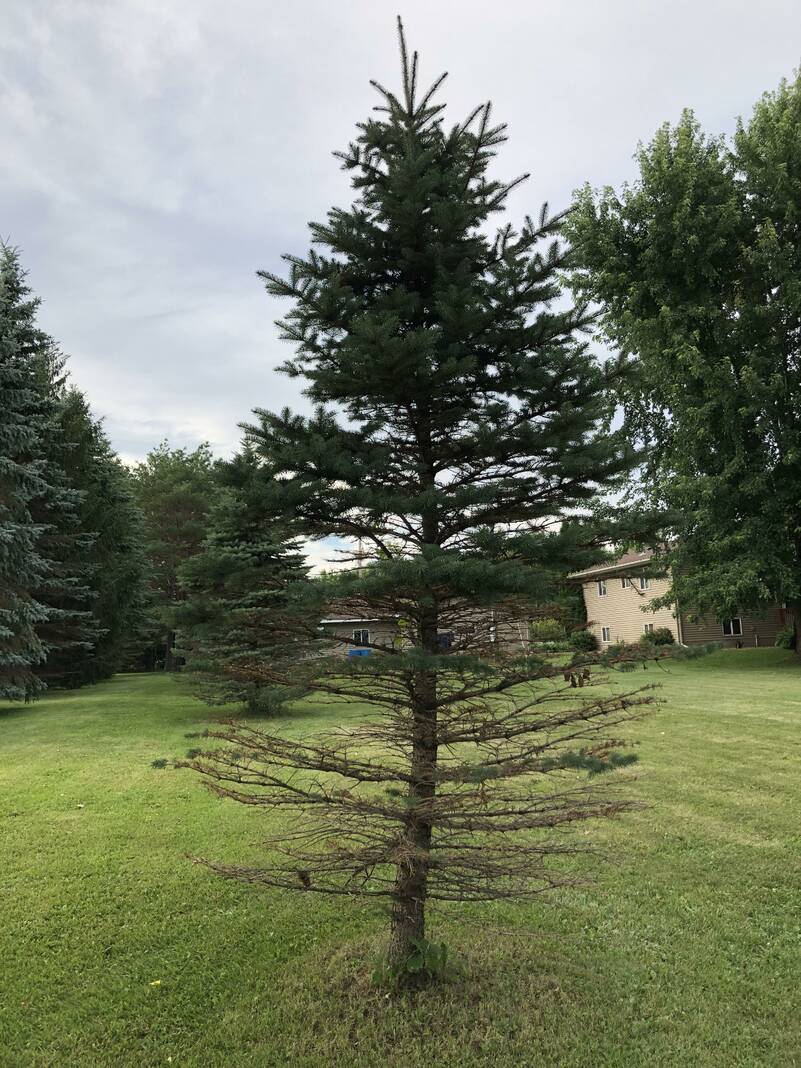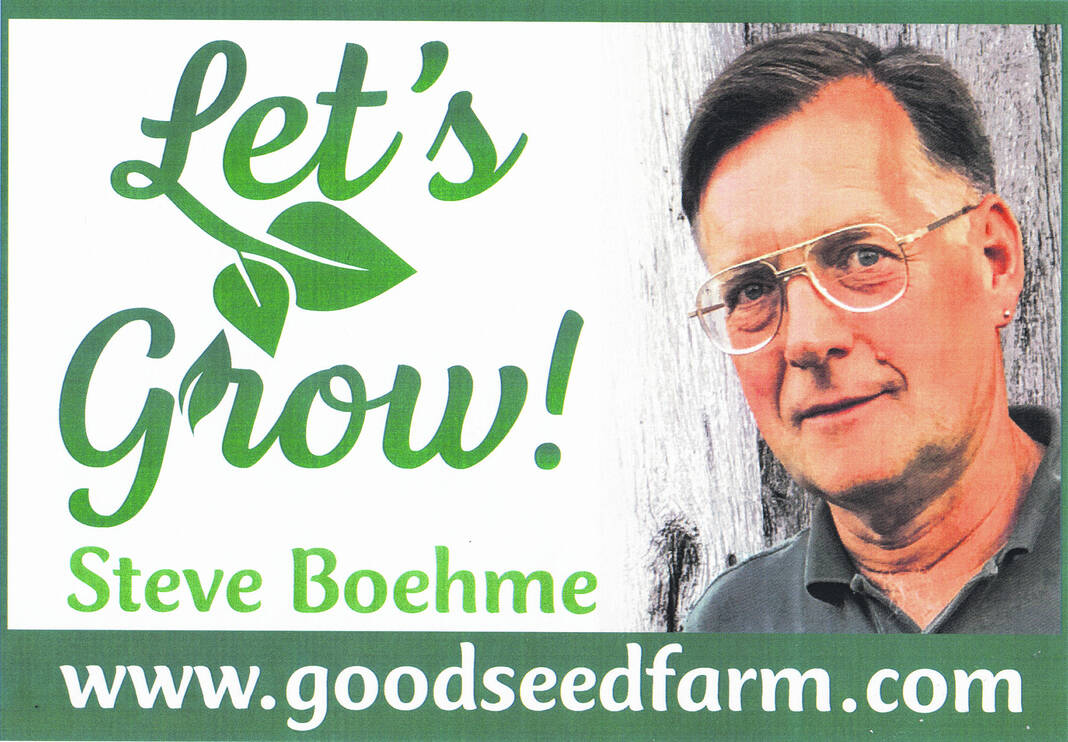
Trees can deplete soil over time, and eventually starve.
GoodSeed Farm

Boehme
All plants have one thing in common. If they don’t like where they’re living, they can’t pick up their roots and move. So, ask yourself, are you doing what it takes to give your trees a long, healthy and happy life?
It never occurs to most people that trees need food, and there’s no guarantee that they’ll find adequate nutrition where they’re planted. As trees grow, so does their appetite. As they grow, trees extend their roots down and out into the surrounding soil, seeking food and water. Most trees have roots that spread at least as far as the tips of their longest branches (called the “drip line”). As the root zone expands, it finds nutrients in the soil. It also finds competition for those nutrients; the roots of other trees and plants.
Doesn’t it make sense that, in the process of growing larger and bearing fruit, making foliage and bearing seed, that trees would deplete the soil they’re growing in? Even rich, healthy topsoil has only so much nutrition in it, and eventually a growing tree will use it all up. In forests, fallen leaves and trees will naturally compost, replenishing the topsoil layer. In your tidy backyard, that process can’t happen by itself.
In fact, you are probably trying to grow lawn and other plants underneath the trees in your yard. Healthy turf puts feeder roots as far as one foot deep, competing with the tree’s feeder roots for every scrap of food and every drop of water. To make matters worse, you may have paved over portions of the tree’s root system, or damaged it digging trenches or foundation holes.
You can DOUBLE the speed of growth of a tree by simply removing lawn grass from its root zone. That’s one reason why we put mulch circles around trees, and expand the mulch circles as the tree grows. Lawn grass gets first dibs on every inch of rainfall, and consumes soil nutrients at a rapid rate. Mulch prevents lawn or weed growth around trees, and also keeps soil moisture from evaporating.
Professional arborists do regular deep-root tree feeding by injecting liquid fertilizers into the soil around trees. Homeowners aren’t equipped to do high-pressure fertilizer injection, but you certainly can feed your trees, and you should do it each year before you mulch.
Plants don’t start to digest fertilizers until the soil temperature warms to 60 or 70 degrees. It’s best to use dry granular organic fertilizers, because they stay in the root zone until the plant is ready to feed. Timed-release fertilizers are stable and will remain in the soil until the plant uses them.
We fertilize trees with organic powdered plant foods like Tree Tone and Holly Tone by Espoma Organics. These are balanced meals containing lots of wholesome natural ingredients like gypsum, greensand and bone meal to help break up clay soil. Espoma Organics is a modern version of the old-fashioned fertilizer mill; a factory where natural ingredients like bone meal, cottonseed meal and other components are ground into powder and blended into fertilizers that build and replenish tired soils. They also contain Micorrhizae, soil micro-organisms that help your trees digest fertilizer and trace minerals.
The best way to feed your trees is by mixing the fertilizer with the soil when you plant. This helps the roots spread quickly so the tree can get established. Good root systems help trees survive drought, and prevent them from being toppled by wind. For established trees you should sprinkle powdered fertilizers generously around them before mulching. This way the fertilizer doesn’t have to find its way through the mulch to get to the roots.
Steve Boehme is a landscape designer/installer specializing in landscape “makeovers”. “Let’s Grow” is published weekly; column archives are on the “Garden Advice” page at www.goodseedfarm.com. For more information is available at www.goodseedfarm.com or call GoodSeed Farm Landscapes at (937) 587-7021.

